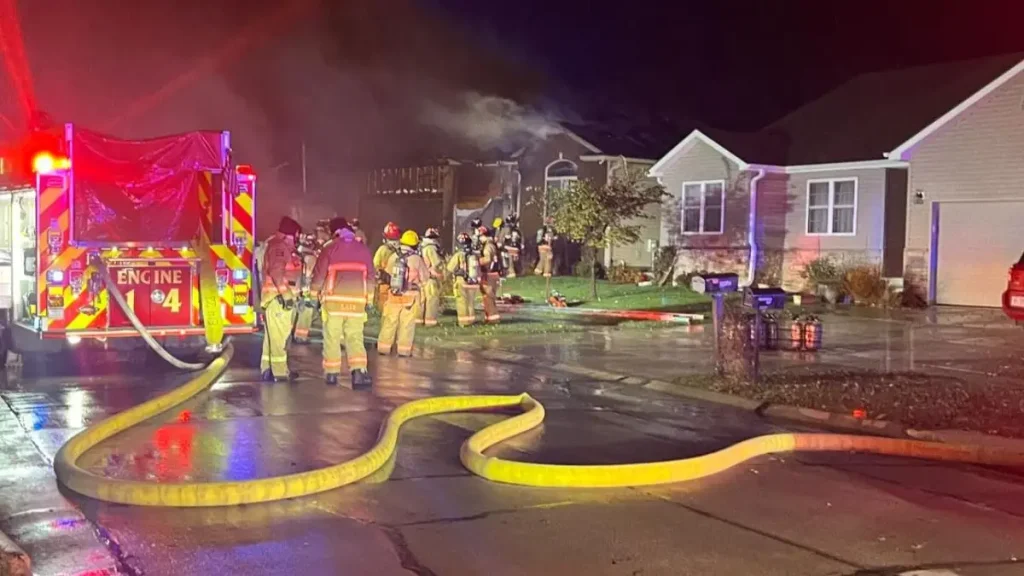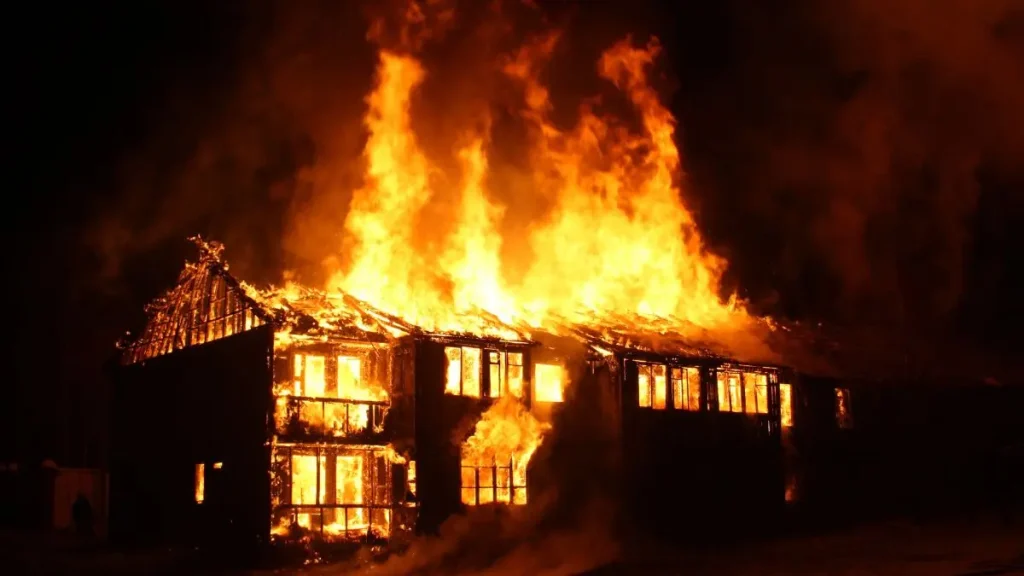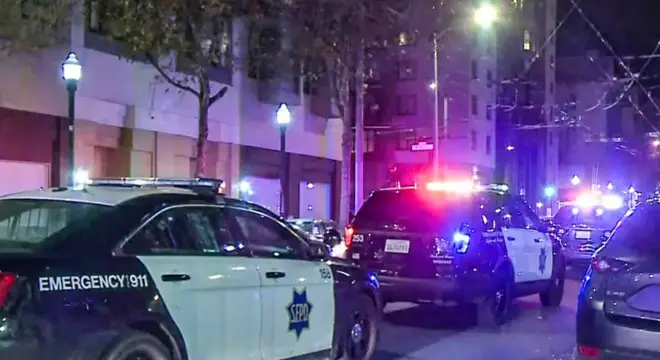Fire in North Lincoln Home Causes $650,000 in Damage
When I first heard about the fire on Saturday night in North Lincoln, I couldn’t help but picture the scene—a quiet street suddenly lit up by flames, with smoke billowing into the night sky. Around 11:00 PM, crews responded to a home near 16th and Culbera Street, where a garage had already caught fire. The wind that night wasn’t helping either, blowing at 20–30 miles per hour and feeding the flames straight into the attic.
What struck me most was that, despite the chaos, the residents and their dog made it out safely. I always think about how quickly things can go wrong in a matter of minutes, and it’s a relief to know no one was physically hurt. But the financial and emotional toll is still heavy—fire inspectors estimate around $400,000 in damage to the home itself, $250,000 in contents, plus the loss of two vehicles.
As you read this, it’s easy to focus on the numbers, but behind them are real lives disrupted. I want to take you through exactly how the fire unfolded, what was lost, and what we can all learn to protect our homes—because incidents like this remind me, and should remind you too, that fire safety isn’t optional.
How the Fire Started and Spread?

When I dug deeper into the North Lincoln fire, I learned that it all began in the garage of the home. According to KLIN, the fire had a significant head start thanks to 20–30 mile per hour winds, which pushed the flames quickly into the attic. Imagine a small spark suddenly turning into a raging inferno because of conditions beyond anyone’s control—it’s a terrifying thought.
Firefighters had to battle the blaze from outside because the fire was too intense to go in. What’s striking is how fast it spread, not just within the home but threatening the neighboring houses as well. Crews worked tirelessly to protect both sides, ensuring the fire didn’t escalate further.
Reading this makes me realize how much a few factors—wind, timing, and structure layout—can affect a fire’s behavior. For you, it’s a reminder that understanding potential fire hazards around your home, especially garages and attics, can make a difference when every minute counts.
Damage Assessment
The damage to the home is heartbreaking. Inspectors estimated $400,000 for the home itself and $250,000 for the contents, plus two vehicles lost to the flames. Numbers can feel abstract, but if you picture someone losing their personal belongings, family memories, and vehicles all at once, it hits differently.
For me, this is where the human side of a fire really shows. You don’t just lose property—you lose the comfort and security of your space. And while insurance can help with financial recovery, the emotional impact isn’t as easily fixed.
If you’re reading this, think about your own home—how prepared would you be if something like this happened tomorrow? Knowing the scale of damage in North Lincoln helps us all reflect on our own vulnerabilities.
Fires can cause devastating losses in minutes, similar to what happened in Donelson, where a kitchen fire injured a resident.
Emergency Response
I have to give credit where it’s due. According to the LNK Fire Rescue Facebook post, crews immediately assessed the situation. Fighting from the outside, they worked strategically to protect neighboring homes while containing the garage fire that had spread into the attic.
It’s easy to underestimate the work that goes into such a response. For me, seeing professionals coordinate under pressure, making split-second decisions to save both lives and property, is a reminder of how critical training and preparedness are.
If you live in areas prone to fire hazards, take note: having an emergency plan, knowing how to evacuate safely, and understanding how crews operate can save lives. The North Lincoln fire could have been much worse without that prompt response.
Quick and coordinated action by firefighters can prevent tragedies from escalating, as seen in Honolulu County, where firefighters contained a residential blaze efficiently.
Investigation and Cause
The cause of the fire is still unknown. While it’s natural to want answers immediately, investigations like these take time.
Fire inspectors have to carefully analyze the scene, rule out accidental and intentional causes, and document everything thoroughly.
From my perspective, this is also a teaching moment. Even without knowing the exact cause, we can see how certain vulnerabilities—like wind exposure, garage clutter, or electrical issues—can increase fire risk.
For you, it’s not just about curiosity; it’s about learning what to check in your own home to prevent a similar disaster.
Fire Safety Lessons

Reading through this incident, a few clear lessons emerge:
- Garage Safety: Avoid storing flammable items near potential ignition sources.
- Wind Precautions: Be aware of weather conditions that can fuel fires; consider fire-resistant landscaping.
- Evacuation Plans: Always have a clear exit strategy and a plan for pets.
- Fire Prevention Tools: Smoke detectors, fire extinguishers, and routine inspections save lives.
I also found advice from experts like NFPA and Red Cross incredibly helpful—they emphasize small, consistent actions that drastically reduce risk. For you, thinking about these precautions now could make all the difference if a fire ever threatens your home.
Community Awareness and Support
One of the most inspiring parts of incidents like the North Lincoln fire is seeing how communities rally together. Neighbors often step in to help, whether it’s offering temporary shelter, sharing supplies, or simply checking in on one another.
Even if it doesn’t make the headlines, these small acts of support mean the world to someone who’s just lost their home.
For you, it’s a reminder that knowing your neighbors and building a sense of community isn’t just nice—it can be lifesaving.
Sharing fire safety tips, helping each other with preparedness, or even just staying aware of local hazards can prevent small incidents from turning catastrophic.
Communities often share updates and helpful tips via messaging groups. For example, many North Lincoln residents stay informed about safety alerts and local hazards through dedicated WhatsApp channels.
Broader Context
Fires like the one in North Lincoln aren’t isolated events. Across Lincoln and similar communities, garage and attic fires account for a significant portion of residential fire damage. According to past local fire reports, strong winds and delayed detection often make these fires particularly destructive.
Looking at the bigger picture helps us understand patterns and prepare better. For you, that means not just thinking about your home, but about local risks—how frequently fires happen, what areas are most affected, and what precautions neighbors take.
Knowledge is power, and seeing trends in your community can guide you to take proactive steps before disaster strikes.
Overnight fires can devastate neighborhoods, much like the one that destroyed a home in Northeast Ohio, highlighting the importance of preparedness.
Practical Takeaways and Reflection
So, what can you take from the North Lincoln fire? Here’s what I keep in mind:
- Check your garage and attic for hazards—remove clutter, flammable materials, and inspect electricals.
- Plan your escape—know exits, keep keys handy, and include pets in your plan.
- Stay weather-aware—windy nights can make even a small fire spread rapidly.
- Invest in safety tools—smoke detectors, fire extinguishers, and fire-resistant materials aren’t optional.
As I reflect on this incident, it’s clear that fires can happen anywhere, often in minutes. But preparation, awareness, and community support can change the outcome. I want to ask you—when was the last time you reviewed your own fire safety plan? Taking a few small steps today could save your home, belongings, and lives tomorrow.
For more insights on home safety and emergency preparedness, visit our Home Incidents section.
Disclaimer: This article is based on information available from public sources. Details may change as investigations continue, and estimates are subject to verification. The content is intended for informational purposes and should not replace professional advice or official updates.


